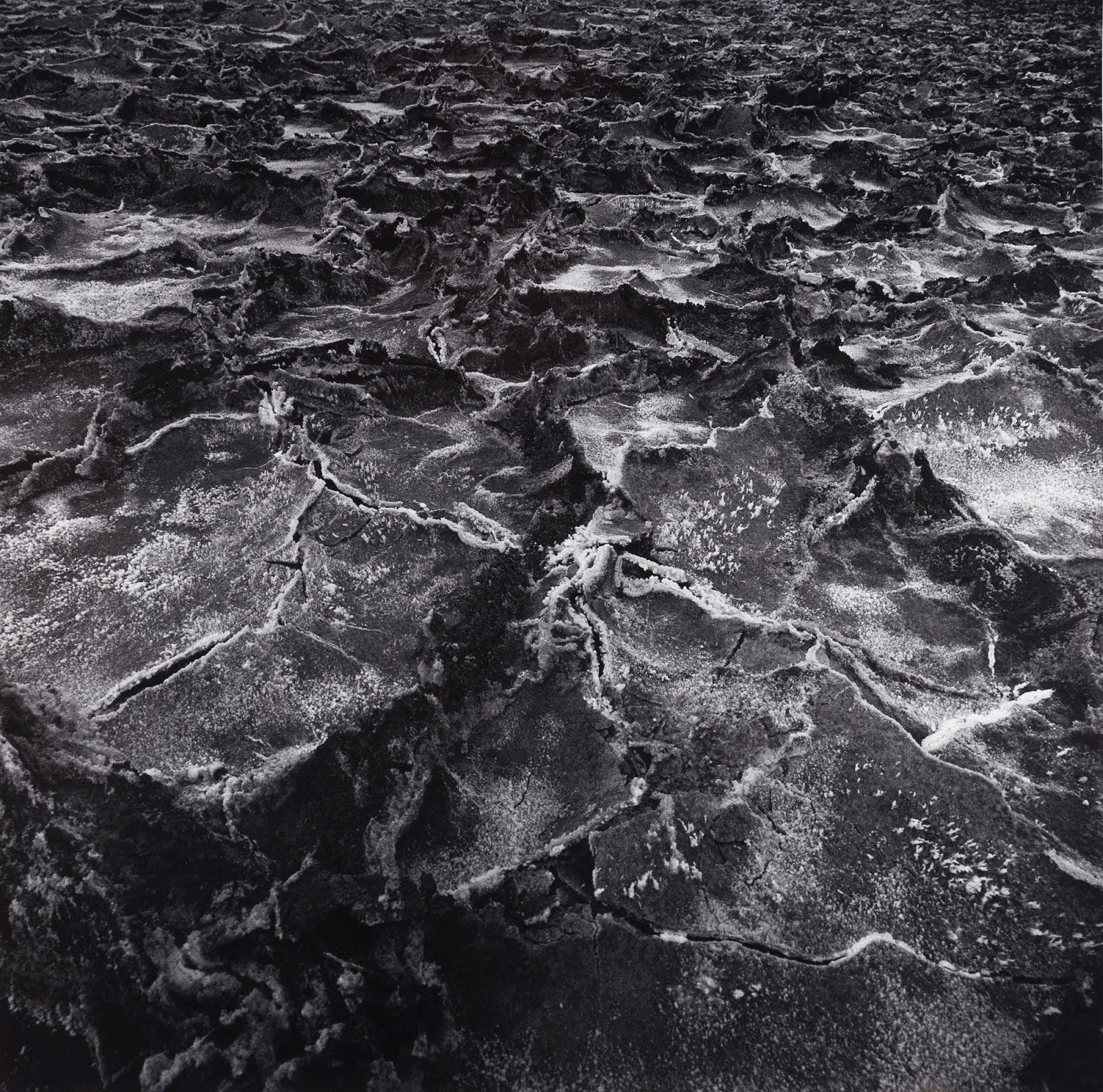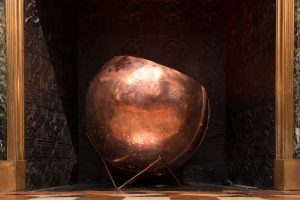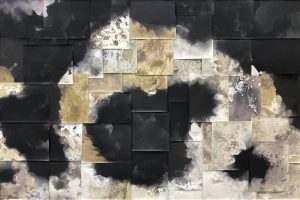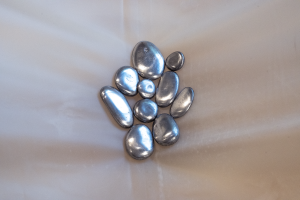Preceded by twelve consecutive months of record-breaking global surface temperatures, a sweltering heat wave in the U.S. announced the beginning of summer––a summer that will once again break temperature records and will likely be surpassed by even higher temperatures next year. These resounding reminders of the current climate crises inflicting our warming planet and their very tangible effects––witnessed through wildfires, droughts, severe weather, and disruptions to human ecosystems––can feel like a thick fog enveloping our daily lives. The distress caused by climate change, coupled with the ominous rhetoric and impending doom readily found in media coverage, has instigated a new era of solastalgia: the despair caused by the desolation of one’s home environment, both physically and psychologically, and a sense of powerlessness in that imposition.1 While there are many agents that one can point to causing such desolation, scientific consensus demonstrates that human behavior is the culprit.
Captured Earth, the current exhibition at the Museum of Contemporary Photography, portrays a different kind of relationship between humans and the environment. Through an ecofeminist perspective, Kristin Taylor, Curator of Academic Programs and Collections at MoCP, assembled a permanent collection exhibition that speaks to the ways that artists work in collaboration with the earth to examine the untold histories and intimate spectacles embedded within the natural world. By signaling an ecofeminist view, one that suggests the foundational notions of material feminist theory,2 the curatorial approach frames the selected photographs as contemplative and meditative acts evoking the power of earth to hold and convey stories and memories.
“Instead of focusing on the environmental tolls, Taylor chose to focus on artists working in communion with nature, offering deep observations of the delicate ecosystems of which humans belong.”
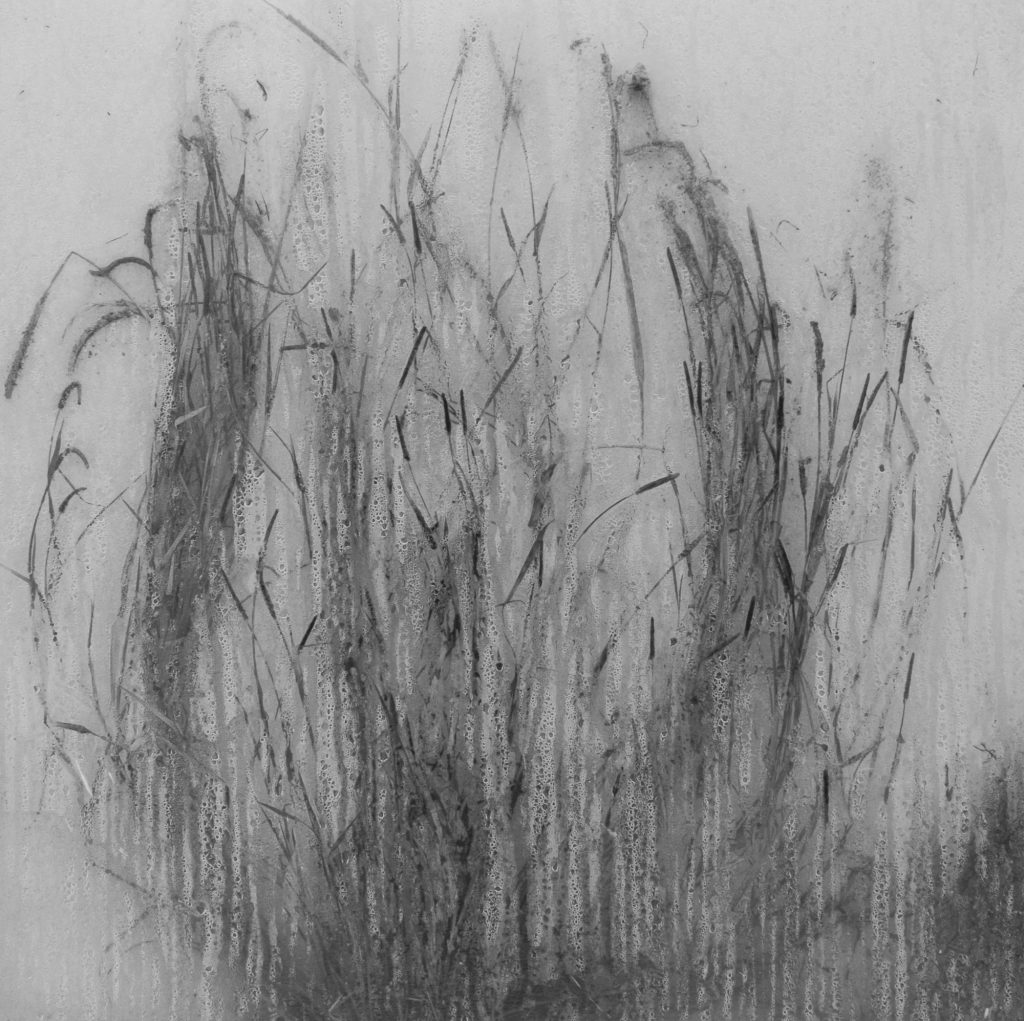
It seems important to state: this is decidedly not an exhibition about the Anthropocene or the environmental damage that humans have caused. You will not see any of Edward Burtynsky’s industrial landscapes or Richard Misrach’s photographs of toxic wastelands on the walls, nor any documentation of ecological crises across the globe. The history of photography is in fact full of records of the environmental impact––and some might say devastation––that humans have caused through mining, pollution, agriculture, and infrastructure projects. Furthermore, the medium of photography itself has its own entanglements with these ecological disruptions. But instead of focusing on the environmental tolls, Taylor chose to focus on artists working in communion with nature, offering deep observations of the delicate ecosystems of which humans belong.
In the framework of the anthropocene,3 environmental change and its ensuing catastrophes are considered the result of human activities. While this epochal premise has been widely adopted within public and academic discourse, the anthropocene and its implications are not without critique.4 There is, of course, the anthropocentric hubris of naming a geologic era after humans, but there is also an ambiguity which obscures the explicit responsibilities of the systems of capitalism, extraction, and colonialism. When viewed through the framework of the anthropocene, the despair and anxiety caused by climate change––solastalgia––can be paralyzing. But a legion of environmental activists, concerned citizens, and artists do not subscribe to such despair. Their practices are acts of hope––a hope that is attained through resistance, toil, and spiritual excavation. As cultural critic and environmentalist Rebecca Solnit has noted, although hope is a forward-directed energy, grounds for hope lie in the records and recollections of the past.5 It is rooted in memory.
“Although hope is a forward-directed energy, grounds for hope lie in the records and recollections of the past. It is rooted in memory.”
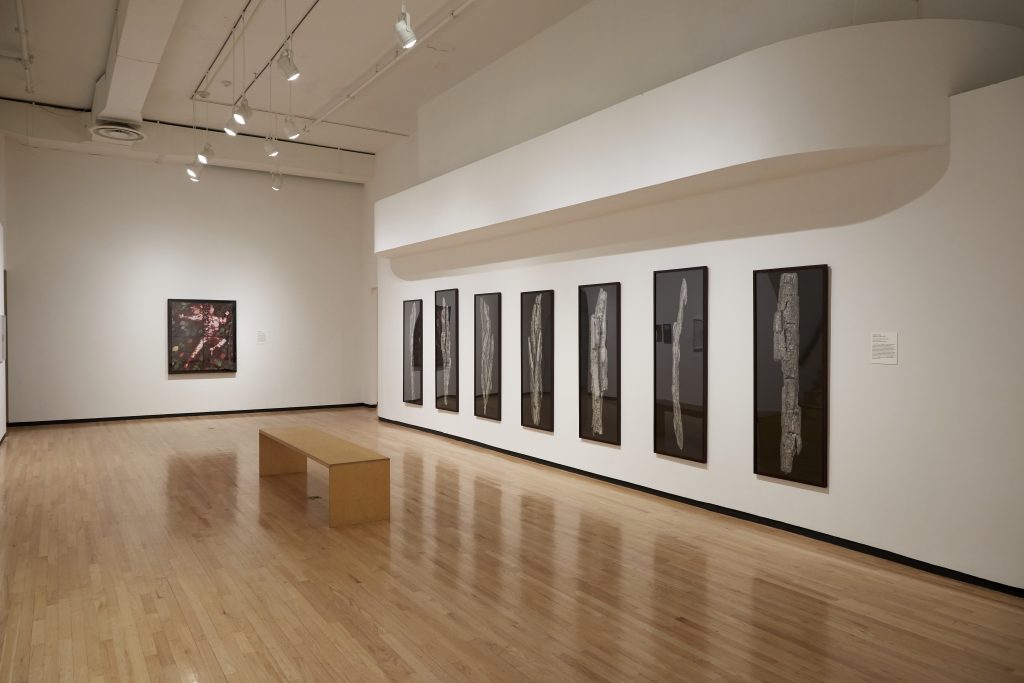
If we employ a posthumanist perspective to see memory beyond the binary categories of ‘human’ and ‘nonhuman’ then we might see that the earth is an active participant in the cultivation of memory. The exhibition Captured Earth takes this premise as its launching point. As curator Kristin Taylor states in the exhibition essay, the artists in this exhibition speak to the importance of an embodied connection to the natural environment to explore connections with the earth, outside of politics and protest. Particularly striking is that many of the works in Captured Earth transcend the contemporary moment of climate crisis, displayed through embodied modalities and distinctly cultural approaches that merge materiality of the earth and the photographic process in a variety of ways.
Works by artists such as Barbara Crane and Byung-Hun Min enliven the form, shape, and texture that permeate our natural environment. Other artists, such as Penelope Umbrico and Alan Cohen, consider the indexicality of the medium, engaging its capacity as a referent and an accumulative imprint of cultural histories. The installation of Crane’s series From Coloma to Covert Sticks (1994) is a particularly impactful introduction to the exhibition in the initial space of the museum. Emphasized by their vertical orientation and human scale, the enlarged fragments of tree bark, which Crane collected near her Michigan retreat, provoke a visual equality of human and nonhuman forms, illustrative of the exhibition’s approach.
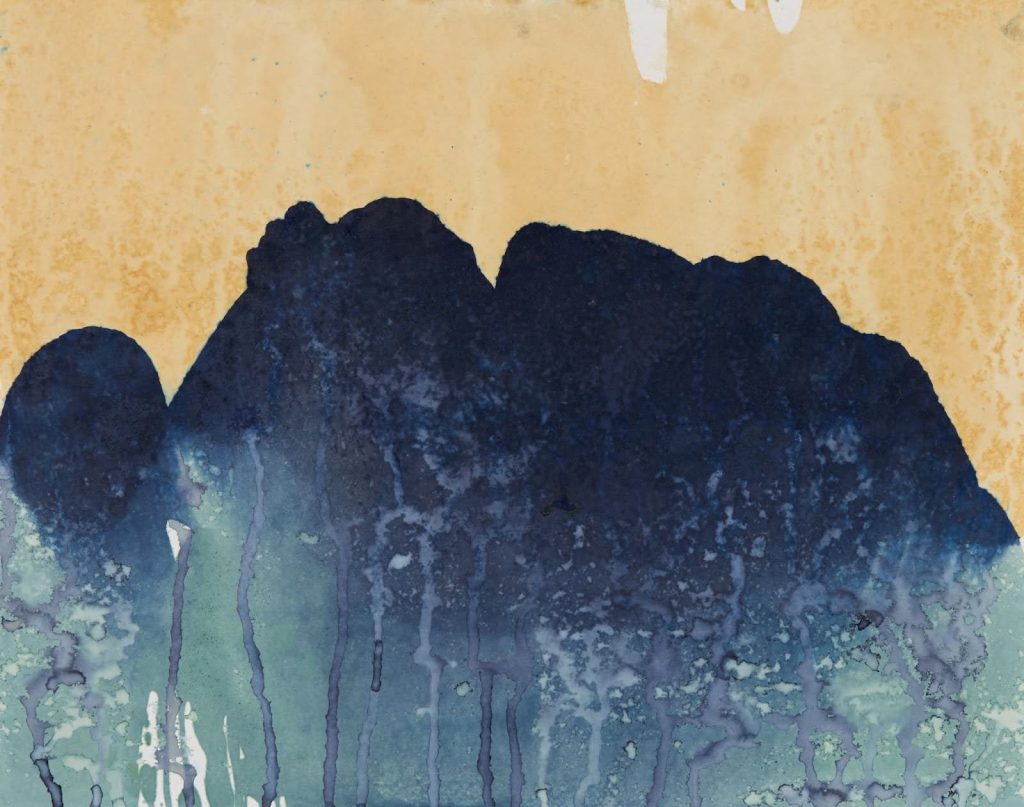
The most compelling works in the exhibition address material agency, both in the photosensitive substrate and the environment. Perhaps not surprisingly, the works that function in this way are cameraless photographs, and are recent acquisitions to the MoCP collection. Meghann Riepenhoff utilizes interventions of photosensitive materials directly in contact with the landscape, foregoing the camera apparatus as a means of recording. In her Ecotone series, she drapes sheets of paper coated with cyanotype chemistry in the elements, collecting the patterns of rainfall and snow. Riepenhoff’s process embraces spontaneity, exposing the sensitized paper to ultraviolet light while simultaneously developing portions of the exposed iron salts. The results are mystifying inscriptions of the environment, with patterns that imply the tension of an ecotone: a junction between two distinct ecosystems where anomalous biodiversity emerges.
Tarrah Krajnak also utilizes the cyanotype process in her series Ayni, Offerings for my Sister (2020), to record an Indigenous ritual from her native homeland of Peru. In this large cameraless work, Krajnak stood directly in the center of the cyanotype paper, evidenced by the pronounced imprints of the soles of her feet, surrounded by an arrangement of plants, rocks, feathers, and thin outlines of panes of glass, creating a talismanic pattern of equilibrium.
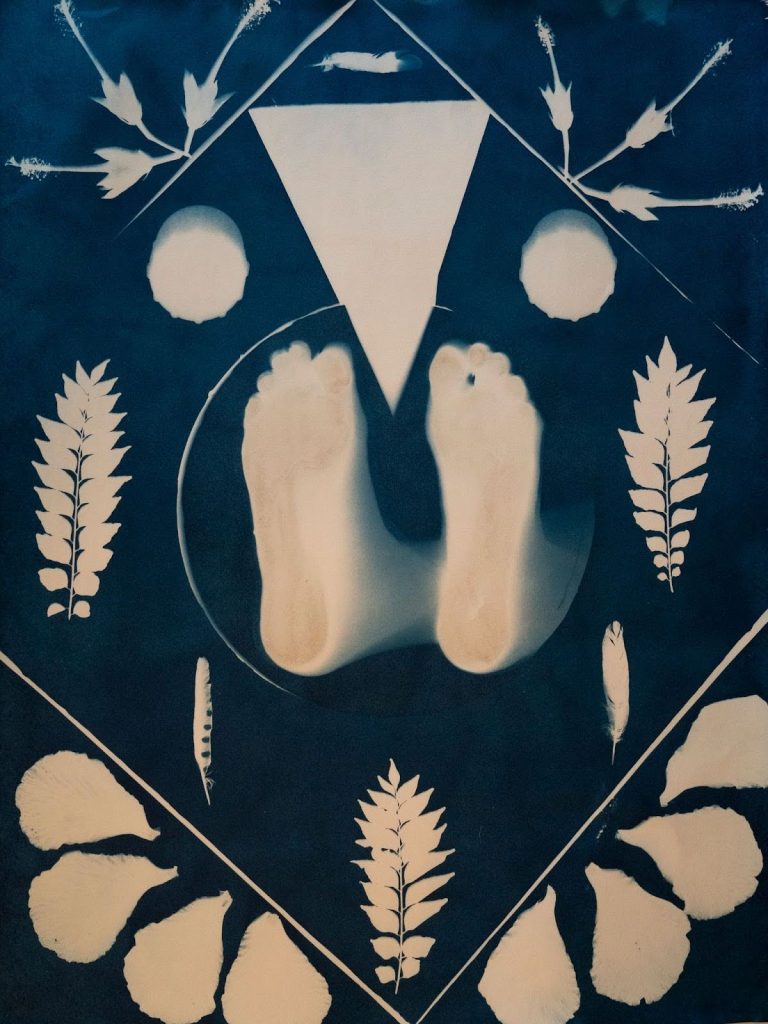
In her Dahodiyinii series (2023), Dakota Mace invokes the memories of her Diné ancestors and the history of the Long Walk in three large-scale works comprised of dozens of cyanotypes, stitched together in panels. Each cyanotype was made in situ at Bosque Redondo (known as Hwéeldi by the Diné), the site in southeastern New Mexico where thousands of Diné were forcibly resettled by the US military during the 1860s. In her process, Mace explores different elements of this traumatic history, creating impressions of branches, stones, and rainfall to evoke the ecology of the memories of the Long Walk. Additionally, Mace dyes the cyanotypes, using substances such as cochineal or cottonwood bark tannin, further connecting the materiality and the environment. By rousing the ancestral memory embedded in the land, Mace’s work exemplifies a foundational concept of Indigenous visualities which recognizes that humanity and nature share material agency. While Mace and many other Indigenous artists working in photography often declare a subversion of the colonialist history of the medium, it is notable that the visceral experience of creating the Dahodiyinii series was done without the intermediary device of a camera, but through contact with the earth, the stones, the flora, and the rainfall of Hwéeldi.

In keeping with the thread of ancestral landscapes, the work by French artist Liza Nguyen holds definitive space within the exhibition. When Nguyen traveled to her father’s home country of Vietnam, she collected soil samples from various places associated with the atrocities from the war, then photographed them upon returning to Europe. The photograph on view in Captured Earth––a pile of tan-colored dirt from Cu Chi, scientifically pristine in its capture and vastly enlarged to emphasize texture––considers the soil as an archive,6 a reservoir of memory charged with the toxicity and bloodshed of the war.
On the second floor of the exhibition, several large black-and-white photographs of abstracted landscapes affirm the notion of nature as mnemonic device. These are selections from the Earth with Meaning series by Alan Cohen, in which he records the imprint of ecological forces or the residual traces of human impact on the land. Cohen’s richly detailed gelatin silver prints exquisitely convey the texture and topography of these sites––locales which carry the burdens of history, as we learn through the context of the geographical titles such as Auschwitz, Poland and Buchenwald, sites of concentration camps during World War II. The photograph, In Situ (Death Valley – California), is an exemplary stand-out; the downward perspective and narrow view fills the frame edge to edge with undulating texture, disorienting our vision and sense of scale, prompting a reconsideration of our own place in the geological timeline which this terrain represents.
Moreover, the surface of Cohen’s prints is evidence of an ecological disruption: the silver halides used in the most common materials of analogue photography have been extracted from the earth, often through violent force and unseen labor, a practice which the photography industry propelled.7 This sense of materiality––of silver as extracted, pictorial agent––rarely receives an acknowledgment within the exhibition of photographic prints which rely on silver’s photosensitive properties. Gelatin silver prints have been the museum standard for over a century, but the tendency remains to foreground the photograph’s representation and not its place within a system of extractive capitalism. Perhaps the overdue arrival of this ecocritical approach to photography scholarship (or lack of it within museum exhibitions) can be attributed to an overemphasis on photography’s illusion of transparency and immediacy. As art historian Robin Kelsey has noted, “In our search for the ecological, we habitually look through photography rather than at it.”8 How might our viewing of Cohen’s photographs change when this facet of the materiality is brought to the foreground?
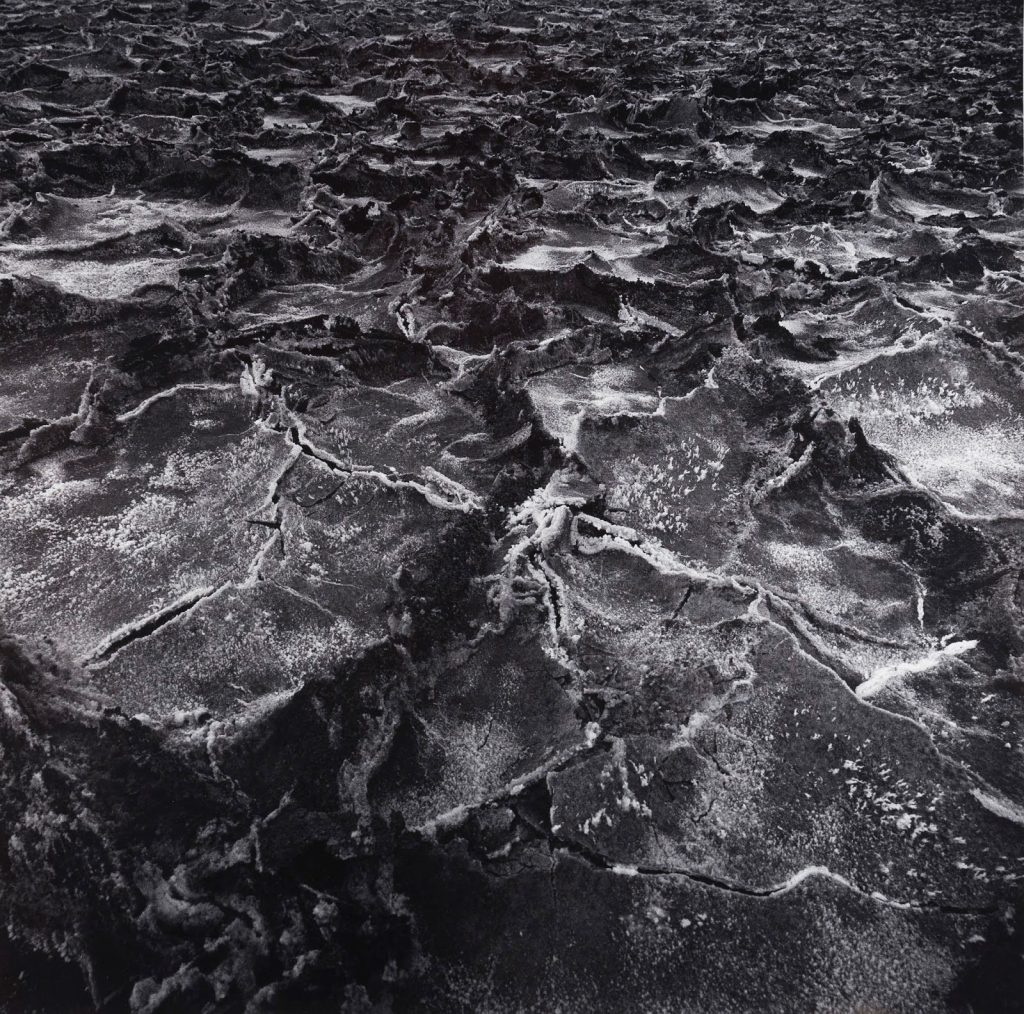
The work of Jeremy Bolen, made at two sites polluted by radioactive material, stands out as the most salient effort to address the ecological disasters caused by industrialization––symptoms of the anthropocene––and the ecology of a photographic practice. His project Above/below ground in the fox river at npl-1 (2012) was made by burying his exposed, undeveloped film, containing images of the factories that caused this pollution, near the banks of the Fox River, a site contaminated by radium-226. Merging environmental decay with the abnormalities the radioactivity caused to his film once fully developed, Bolen reveals the lasting toxicity that has seeped into the soil and waters through careless industrial practices.
The ecofeminist thread loses its momentum in the final section of the exhibition, which includes several early-twentieth century photogravures by Karl Blossfeldt, and a selection of richly hued dye sublimation prints by the modernist and environmentalist Eliot Porter. These works, in their overly aestheticized approach, are representative of previous generations of photographic interest in botanical forms and nature conservation. Though Porter had a singular career using his photography towards the environmental conservation movement, his modernist aesthetic often failed to encompass an expansive ecology––one which might include the Indigenous inhabitants of the wilderness that he depicted. Within this moment of urgency and amongst more contemporary works, Blossfeldt and Porter miss the mark of the exhibition’s attentiveness to embodiment and material agency. In this regard, the limitations of a permanent collection exhibition were conspicuous. Even the omissions of notable artists in the MoCP collection were surprising; for instance, Terry Evans’s sustained engagement with prairie landscapes, of which the museum holds a significant amount, would have been a welcome addition to Captured Earth.
Ultimately, this exhibition turns our gaze away from the anthropocentric criticism found in current environmental discourse, and proposes examinations of our relationship to the earth that are more deeply connected to ancestral memory or non-human agency. Some of the artists in Captured Earth ask us to consider the Earth itself as mnemonic, demonstrating that the act of collaborating with the natural world can be a means of conjuring hope from the memories the earth holds. If memory provides an impetus for hope––and perhaps an antidote for solastalgia––then several of the artists in Captured Earth are invested in collaborating with their environments to elicit the ecology of a memory that incites action, not despair.
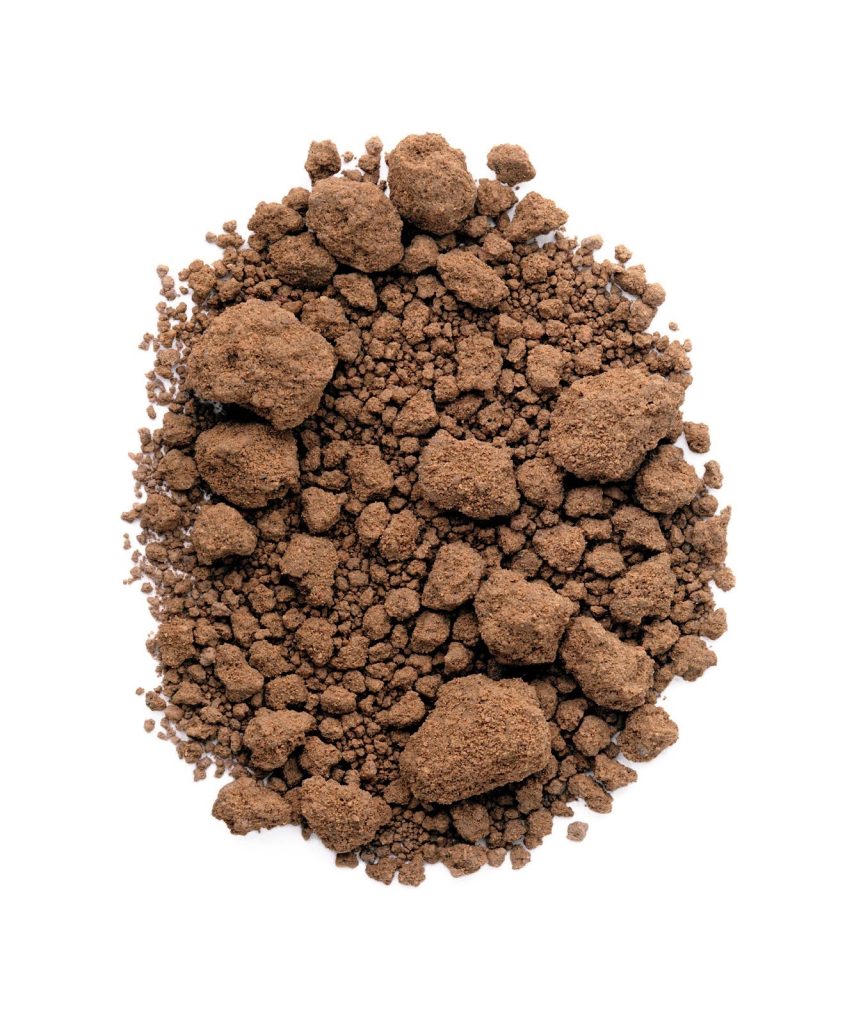
Notes
- Solastalgia is a term developed by the Australian philosopher Glenn Albrecht, which he defines most simply as the lived experience of negatively perceived environmental change. See Glenn Albrecht, “‘Solastalgia’ : A New Concept in Health and Identity,” PAN: Philosophy Activism Nature 3 (2005): 44–59, https://doi.org/10.4225/03/584F410704696.↵
- Environmental feminists propose an emphasis on the materiality and agency of the non-human world by rejecting the nature/culture duality and radically reconceptualizing nature itself. For an overview of Material Feminism, see Stacy Alaimo and Susan J. Hekman, eds., Material Feminisms (Bloomington, IN: Indiana University Press, 2008).↵
- The Anthropocene is a proposed geological epoch in which the dominant and disruptive force in the Earth’s systems and terrain is human activity. To view transdisciplinary research exploring the frameworks for emerging critical knowledge related to this new era, see Anthropocene Curriculum: https://www.anthropocene-curriculum.org/↵
- Several scholars have criticized the discourse on the Anthropocene. For an analysis of how capitalism has contributed to climate change, see T. J. Demos, Against the Anthropocene: Visual Culture and Environment Today (Berlin: Sternberg press, 2017). For an analysis of Anthropocene visuality and its materialization in contemporary photography practice, see Siobhan Angus, Camera Geologica: An Elemental History of Photography (Durham: Duke University Press, 2024).↵
- Rebecca Solnit, Hope in the Dark: Untold Histories, Wild Possibilities, Third edition (Chicago, Illinois: Haymarket Books, 2016).↵
- In her investigative approach, Nguyen’s project is akin to the concept of soil as counter-memory, developed by archaeologist Alfredo González-Ruibal, which presents a challenge to suppression, erasure and repression of political memory. See Dubravka Sekulić, Milica Tomić, and Philipp Sattler, “Digging up the Past: Soil as Archive,” The Architectural Review, February 12, 2020, https://www.architectural-review.com/essays/digging-up-the-past-soil-as-archive.↵
- According to art historian Siobhan Angus, “By 1920, Kodak became the largest consumer of silver in the United States outside of the US Mint. By 1998, photography accounted for 40 percent of all silver used in the United States.” See Angus, Camera Geologica, 92.↵
- Robin Kelsey, “Photography and the Ecological Imagination,” in Nature’s Nation: American Art and Environment, Karl Kusserow et al., eds., (New Haven London: Distributed by Yale University Press, 2018), 394.↵
Captured Earth, presented by the Museum of Contemporary Photography at Columbia College Chicago, continues through August 18, 2024.
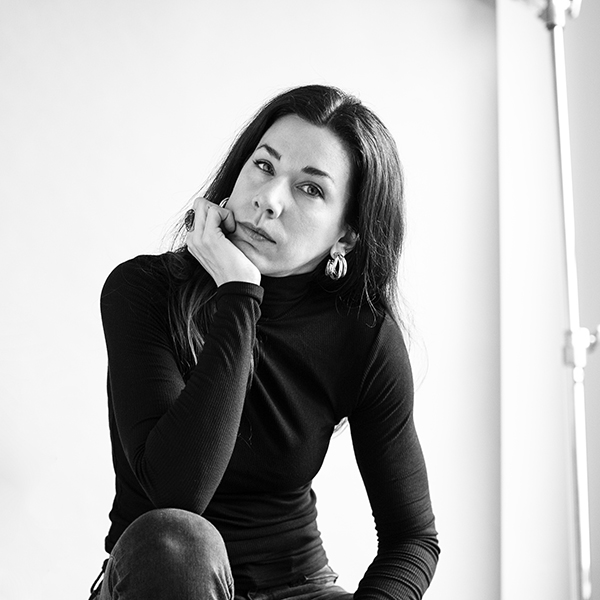
About the author: Kristie Kahns works in the photographic field as a teaching artist, image-maker, writer, and emerging scholar. Her interests include contemporary approaches to photographic materiality, and the pedagogy of analogue and historical processes. She is a recent graduate of the School of the Art Institute of Chicago, and holds a BA in Photography from Columbia College Chicago.
